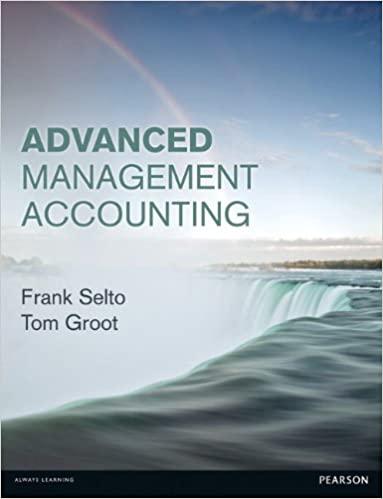Strategic outsourcing of manufacturing You have interviewed the Senior Vice-President for Outsourcing from a company that has
Question:
Strategic outsourcing of manufacturing You have interviewed the Senior Vice-President for Outsourcing from a company that has outsourced global production of electronic parts to a previously independent manufacturer.
1. Use the chapter’s steps for strategic decision making to describe this company’s production-
outsourcing decisions.
2. Describe differences that you would expect if this company were outsourcing services.
Five years ago we reduced the number of outsourcing partners from dozens to five or six.
We do 90% of our business with only a few partners. We had three main reasons for this: to reduce fragmentation and diversity, to maintain control, and to improve our ‘leverage position’.
This means we want to have a strong impact on the partner. We do not want to represent only 1 or 2% of their sales, but 10 to 20%. This makes us important to them and they important to us. It enables us to discuss strategic decisions and new investments with them on senior management level, instead of being only operationally involved with the partner.
One of our most important global suppliers is Company ABC, which has multiple plants located in Europe, Asia and North America. Although ABC also services one of our competitors, we had three main reasons to partner with ABC: first, both companies had a strategic fit.
ABC wanted to strengthen its European business in one of our product sectors. We wanted to eliminate manufacturing this intermediate product, which was mainly produced in Europe.
The transaction would lead to a win-win solution for both parties. Secondly, we thought the organisational cultures of both companies matched well. I think corporate culture is more important than national culture. Both companies were willing to invest in a long term relationship, and not to go for short term benefits exclusively. Both companies were trying to maintain continuity in their management. And thirdly, ABC was and is a viable and financially healthy company, which gave us confidence that the relationship can be long term.
In the end we needed to show that the strategic fit would pay off financially. How much is the partner willing to pay for our activities/business? What will be the future competitive outlook of the business on the longer term? However, we do not look further into the future than 5 to 6 years, because it is very difficult to make predictions nowadays. ABC, because of its good strategic match with us, gave us the best deal, but we agreed to evaluate the relationship after three years, with provisions for exiting the contract at that time.
We guaranteed minimum sales for the contracted years, which means we bear the risks of reduced demand, but ABC must be flexible to meet unexpected higher demands. Smoothing supply fluctuations and eliminating bottlenecks are the major concerns. We regularly monitor their input costs, product costs, on-time delivery and quality. We help them stay competitive by providing benchmarked information. We have made ‘Chinese-wall’ agreements for the protection of our intellectual property. So we allow them to produce even for our competitors, because we want ABC to expand and realise economies of scale that will benefit us, too. Because we are confident in ABC’s governance structure, these controls should ensure ABC’s performance and costs and leaks of information to competitors. This is going well, and gradually we have worked with ABC to create innovations for our products. We hope these joint innovations will increase over time.
Step by Step Answer:






